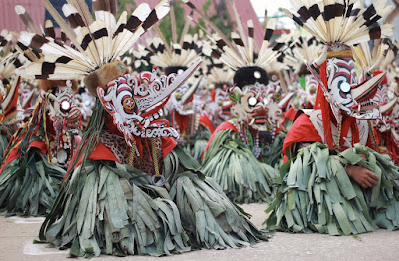Where Did The Dayak Ancestors Come From?
A question that continues to arise in the anthropological and socio-cultural treasures is related to the origin or ancestry of the Dayak Tribe.
In connection with the foregoing, people also raise the following question, were the ancestors of the Dayak tribe Chinese? This question often arises because of the similarities between today's Dayaks and Chinese people.
Then, how to answer? In general, most of the inhabitants of the archipelago are Austronesian speakers. Currently the dominant theory is that of linguists such as Peter Bellwood and Blust, that the place of origin of the Austronesian language is Taiwan.
About 4,000 years ago, a group of Austronesian people began to migrate to the Philippines. About 500 years later, a group began to migrate south to the present Indonesian archipelago and east to the Pacific.
However, these Austronesian people were not the first inhabitants of Borneo Island. Between 60,000 and 70,000 years ago, when the sea level was 120 or 150 meters lower than now and the Indonesian archipelago was land (geologists call this land "Sunda"), humans had migrated from the Asian continent to the South and had reached the continent of Australia.
In the southern area of Kalimantan, the Dayak tribe once built a kingdom. In the Dayak oral tradition, in that area it is often called Nansarunai Usak Jawa, namely the Nansarunai Kingdom of the Dayak Maanyan which was destroyed by Majapahit. It is estimated that this occurred between the years 1309-1389.
This incident resulted in the Dayak Maanyan tribe being pushed and scattered. Some of them enter the interior areas of the Dayak Lawangan tribe. The next big flow occurred when the influence of Islam originating from the Demak Kingdom along with the entry of Malay traders (around 1520).
Most of the Dayak tribes in the South and East Kalimantan region who embraced Islam left the Dayak Tribe and no longer recognized themselves as Dayaks. They call themselves the Banjar people and the Kutai tribe.
Meanwhile, the Dayaks who rejected Islam returned to the river, entered the interior, living in the areas of Kayu Tangi, Amuntai, Margasari, Batang Amandit, Batang Labuan Amas, and Batang Balangan.
Some of them continued to be pushed into the jungle. Most of the Dayak Muslims are in South Kalimantan and parts of Kotawaringin. One of the famous Hindu Banjar leaders is Lambung Mangkurat according to the Dayaks who was a Dayak (Ma'anyan or Ot Danum).
Not only from the archipelago, other nations also came to Kalimantan. The Chinese nation is recorded starting to come to Kalimantan during the Ming Dynasty which is recorded in the book "323 History of the Ming Dynasty" (1368-1643).
From the Hanzi lettered manuscripts, it is stated that the first city visited was Banjarmasin and it is stated that a prince who was of Biaju blood became the successor of Sultan Hidayatullah I. The visit was during the time of Sultan Hidayatullah and his successor, Sultan Mustain Billah.
Hikayat Banjar reports that non-permanent visits by Chinese and European traders (called Walanda) in South Kalimantan occurred during the Hindu Banjar Kingdom (XIV century). Chinese traders began to settle in Banjarmasin in 1736.
The arrival of the Chinese in South Kalimantan did not result in the displacement of the Dayak population and had no direct influence, because they only traded, especially with the Banjar Kingdom in Banjarmasin. They did not directly trade with the Dayaks.
Relics of the Chinese people are still kept by some of the Dayak tribes such as malawen plates, pots (jars), and other ceramic utensils.
Since the beginning of the fifth century, the Chinese have arrived in Kalimantan. In the XV century the Yongle Emperor sent a large army to the South (including the Archipelago) under Zheng He's leadership, and returned to China in 1407, after previously stopping in Java, Kalimantan, Malacca, Manila and Solok.
In 1750, Sultan Mempawah received Chinese (from Brunei) who were looking for gold. The Chinese people also brought merchandise, including opium, silk, glassware such as plates, cups, bowls and jars.
Today the Dayak tribe is divided into six large groups, namely the Apokayan (Kenyah-Kayan-Bahau), Ot Danum-Ngaju, Iban, Murut, Klemantan, and Punan. The Dayak Punan family is the oldest Dayak tribe that inhabits the island of Borneo. Meanwhile, the other Dayak families are the result of assimilation between the Dayak Punan and the Proto Melayu group (Dayak ancestors who came from Yunnan).
The six families are further divided into approximately 405 sub-ethnic groups with distinctive cultural characteristics. These characteristics determine whether a sub-ethnic group in Kalimantan can be included in the Dayak group or not.

